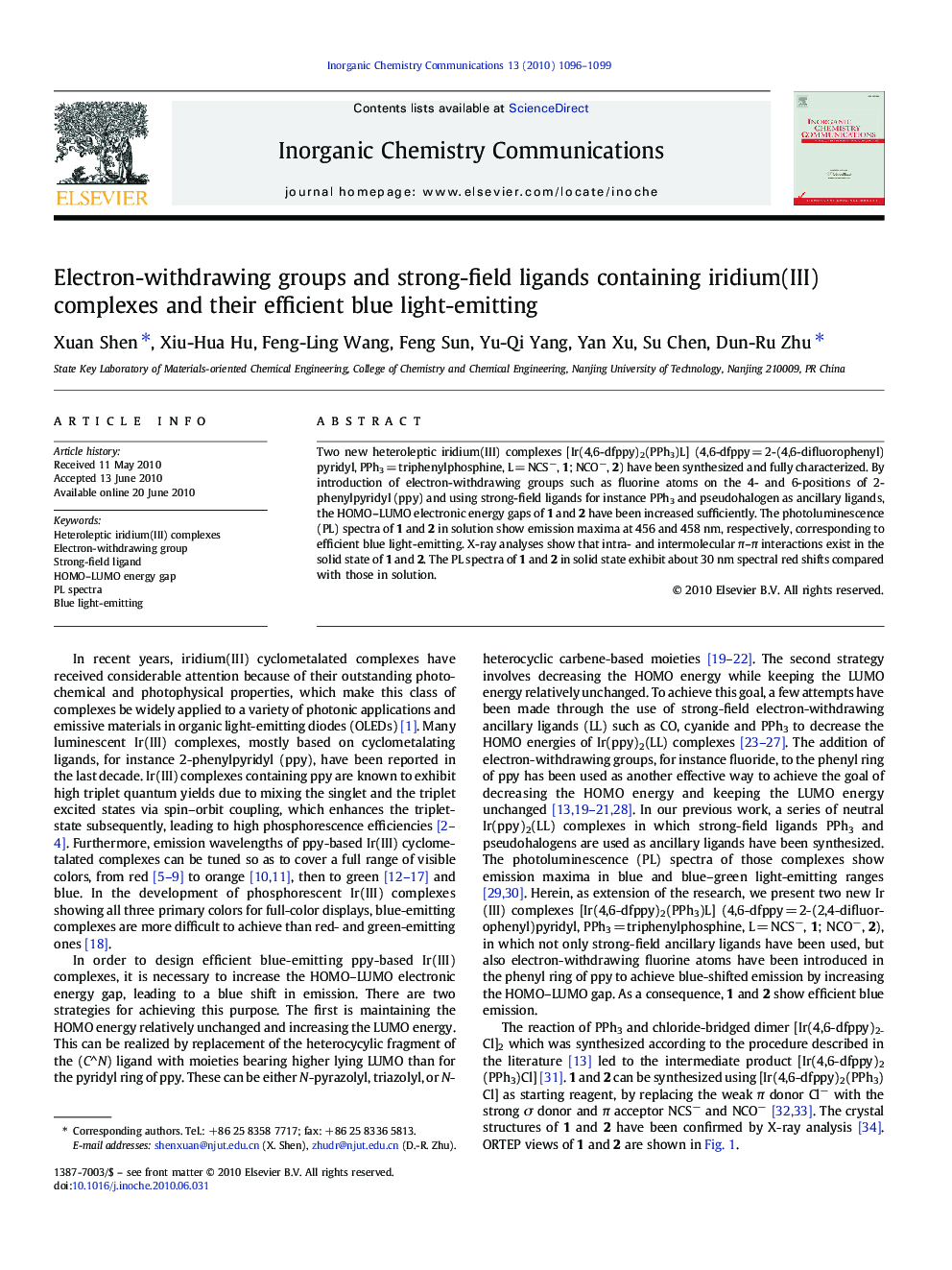| Article ID | Journal | Published Year | Pages | File Type |
|---|---|---|---|---|
| 1302950 | Inorganic Chemistry Communications | 2010 | 4 Pages |
Two new heteroleptic iridium(III) complexes [Ir(4,6-dfppy)2(PPh3)L] (4,6-dfppy = 2-(4,6-difluorophenyl)pyridyl, PPh3 = triphenylphosphine, L = NCS−, 1; NCO−, 2) have been synthesized and fully characterized. By introduction of electron-withdrawing groups such as fluorine atoms on the 4- and 6-positions of 2-phenylpyridyl (ppy) and using strong-field ligands for instance PPh3 and pseudohalogen as ancillary ligands, the HOMO–LUMO electronic energy gaps of 1 and 2 have been increased sufficiently. The photoluminescence (PL) spectra of 1 and 2 in solution show emission maxima at 456 and 458 nm, respectively, corresponding to efficient blue light-emitting. X-ray analyses show that intra- and intermolecular π–π interactions exist in the solid state of 1 and 2. The PL spectra of 1 and 2 in solid state exhibit about 30 nm spectral red shifts compared with those in solution.
Graphical abstractThe PL spectra of high HOMO–LUMO energy gaps containing iridium(III) complexes [Ir(4,6-dfppy)2(PPh3)L] (L = NCS−, 1; NCO−, 2) in solution show emission maxima at 456 and 458 nm, respectively, corresponding to well blue light-emitting. The PL spectra of 1 and 2 in solid state exhibit 30 nm spectral red shifts.Figure optionsDownload full-size imageDownload as PowerPoint slide
